They say doing the same thing over and over and expecting a different result each time is the definition of insanity, right?
If that’s indeed the case, the Arizona Coyotes need to use the lessons of the past in order to avoid another bout of insanity this season when it comes to prospect development.
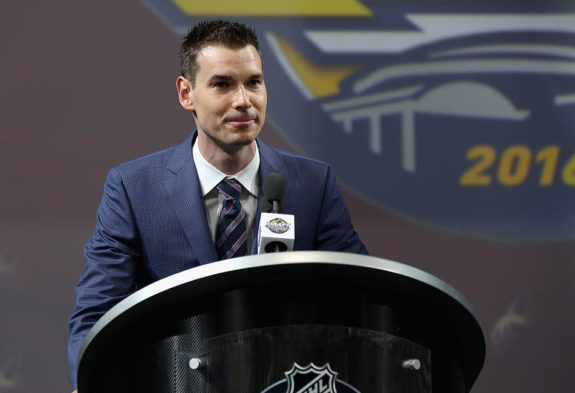
After watching first-round picks like Dylan Strome, Brendan Perlini, and others flame out in Arizona (or never develop at all), general manager John Chayka must give Barrett Hayton, the club’s top prospect and the No. 5 overall selection in the 2018 draft, a chance to develop his skills at the NHL level this season, rather than returning him to the Sault Ste. Marie Greyhounds for another year of junior hockey.
Learning From the Past
As of late, the Coyotes haven’t had a ton of success with turning their top prospects into top NHL talent. In fact, one could argue, out of the team’s 10 first-round picks from 2010 to 2016, only three – Max Domi, Clayton Keller, and Jakob Chychrun – have developed into solid, reliable NHL players.
Some, like Nick Merkley (2015, 30th overall) and Mark Visentin (2010, 27th overall), have dealt with career-altering injuries, but the rest just didn’t develop into NHLers during their tenures in Arizona, and there’s one thing they all have in common: they all played two additional seasons of junior hockey after being drafted.
Brandon Gormley was selected at No. 13 in 2010 and was sent back to the QMJHL for two more seasons afterward.
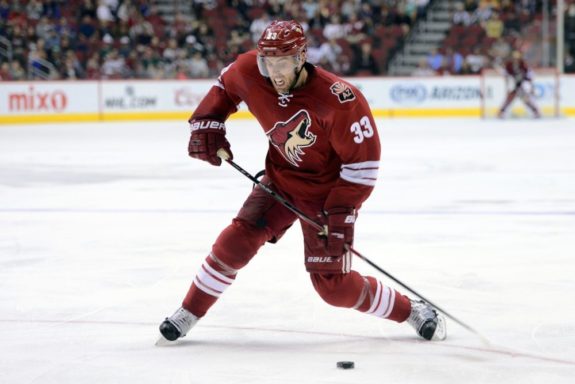
He turned out to be an absolutely colossal bust – Gormley hasn’t skated on NHL ice since the 2015-16 campaign and has played for three different European teams in the last two seasons. Making his failed development even tougher to swallow is the fact that Stanley Cup champions Jaden Schwartz and Vladimir Tarasenko were selected one and three picks after Gormley, respectively, in 2010.
Henrik Samuelsson, the No. 27 pick of the 2012 draft, was sent back to the WHL’s Edmonton Oil Kings following his first two NHL training camps.
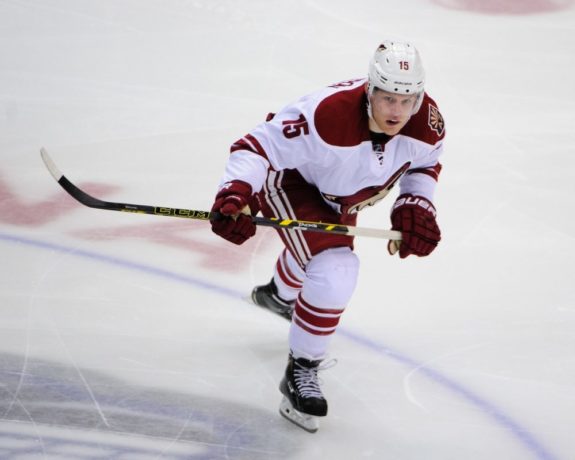
He won a Memorial Cup in 2014, but didn’t pan out as a professional – Samuelsson played just three NHL contests in Arizona, all during the 2014-15 campaign, and has spent time in the ECHL in each of the past two seasons.
Connor Murphy, the 20th overall pick in 2011, played for the OHL’s Sarnia Sting in his first two seasons in the Coyotes organization.
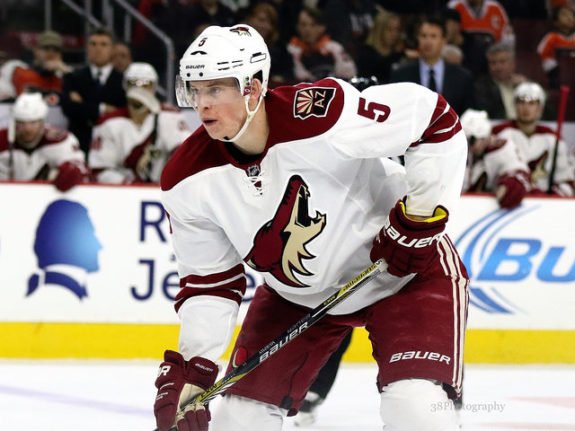
Murphy turned into a nice No. 4 or No. 5 defenseman during his time in Arizona and has continued to play regular minutes since being traded to the Chicago Blackhawks in the Niklas Hjalmarsson trade, but his career-high in points is 17 after six NHL seasons. Not quite what you’re looking for in a first-round defenseman.
Brendan Perlini, the 12th selection in the 2014 draft, was sent back to the OHL’s Niagara IceDogs for two more seasons of junior hockey after being drafted.
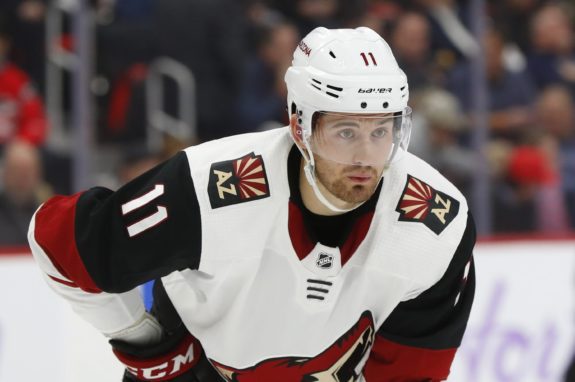
He didn’t accomplish much in Arizona, and he was sent to the Chicago Blackhawks in the trade that brought Nick Schmaltz to the desert.
Dylan Strome, the No. 3 pick of the 2015 draft, played two additional seasons in the OHL with the Erie Otters after being drafted.
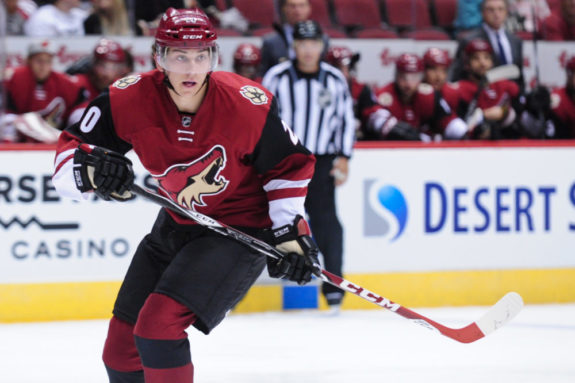
He’s had success with the Blackhawks, but he didn’t pan out in Arizona, and was dealt to Chicago in the Schmaltz trade.
Five players. Five different drafts. Two different coaching staffs.
Stil the same result – none of these players had success in Arizona.
The Hayton Question
Hayton looks to have earned a spot on Arizona’s opening night roster, but, from the looks of it, he might spend some time in the press box, as he was not in the lineup for Arizona’s final preseason game on Saturday night.
One could argue that Hayton is more deserving of a spot in the lineup than Christian Fischer, who hasn’t shown much consistency during his career so far, but that’s neither here nor there.
When it comes to the status of Hayton in 2019-20, the Coyotes are limited to just two choices due to the CHL-NHL Transfer Agreement. Hayton must either play this season in the NHL with the Coyotes, or must be sent back to junior. He’s not AHL-eligible yet, so the Coyotes must make a tough decision here.
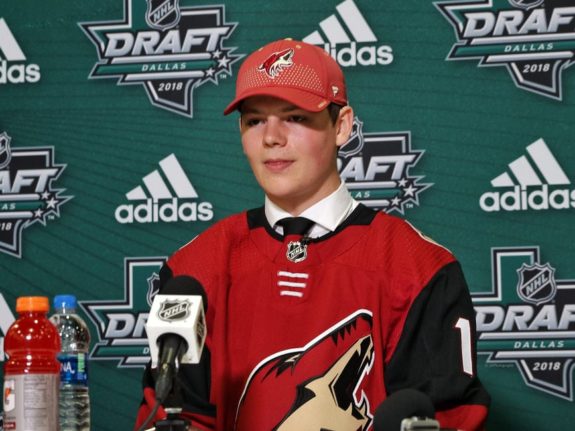
As we discussed, the Coyotes’ tendency in situations like these is to play rookies sparingly, if at all, before sending them back to junior before the month of October is out.
That trend needs to change in 2019-20.
Give the Kid a Chance
Hayton, who posted 66 points in 39 OHL contests last year, plus four more assists in five games at the World Juniors, finds himself in a similar position to the situations Max Domi and Dylan Strome found themselves in during the 2014-15 and 2016-17 seasons, respectively.
Like Strome and Domi, Hayton doesn’t have anything to prove in junior hockey, but he might not be ready to play top-six minutes at the NHL level. In the past, Strome played just seven games before returning to the OHL in 2016-17, while Domi was among the last cuts prior to the start of the 2014-15 regular season.
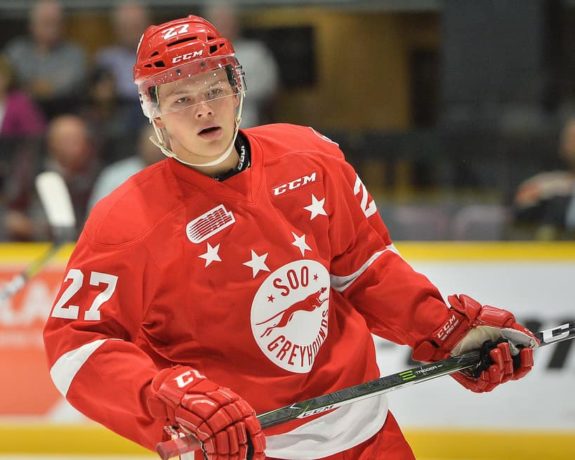
However, I believe Hayton needs to spend the entire 2019-20 season with the Coyotes. Sure, they’ll use up a year of team control, but playing 12 to 13 minutes at the NHL level is more valuable than 20 minutes a night against OHL competition, in my opinion. The league is trending more toward speed and skill now than it ever has in the past, and that should favor Hayton’s brand of hockey as he gets his NHL career started at the age of 19.
Additionally, the Coyotes possess better depth at the forward position than they did when Strome and Domi were coming up through the system. Arizona’s bottom-six in 2014-15 consisted of players like Kyle Chipchura, B.J. Crombeen, Tye McGinn, Martin Erat, and Dave Moss, among others.
With the London Knights, Domi played with Christian Dvorak and Mitch Marner on the top line – Arizona definitely made the right call here in keeping Domi off of what became a tanking Coyotes team in 2014-15. The environment surrounding the team was not conducive to success.
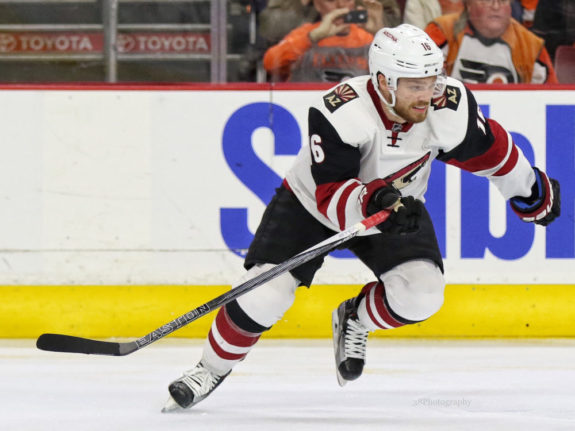
In 2016-17, with Strome making his NHL debut, the Coyotes weren’t much better, icing players like Josh Jooris, Peter Holland, Ryan White, and Jamie McGinn, among others, in the bottom-six. The Coyotes again missed the playoffs by a wide margin, while Strome posted 75 points in 35 games with the Erie Otters, adding a further 34 points in 22 postseason games. Yet another case where the Coyotes were not in a position to develop Strome at the NHL level.
This year is different, though. Arizona appears ready to contend for a postseason spot, and they don’t need to count on a 19-year-old to make an immediate splash in the league. In years past, draft picks like Domi and Strome were expected to immediately come in and be the saviors for struggling Coyotes teams.
This year, there is no pressure on Hayton to perform at a high level immediately. The Coyotes, for the first time in a while, boast four lines of skilled, legitimate NHL forwards this season, so Hayton will have tons of support from his teammates and won’t be expected to carry the load as a rookie.
For these reasons, I believe a full season at the NHL level is the only way to proceed when it comes to Hayton’s development. With Arizona’s Thursday night season opener rapidly approaching, we’ll soon find out how the organization plans to deploy Hayton in 2019-20.